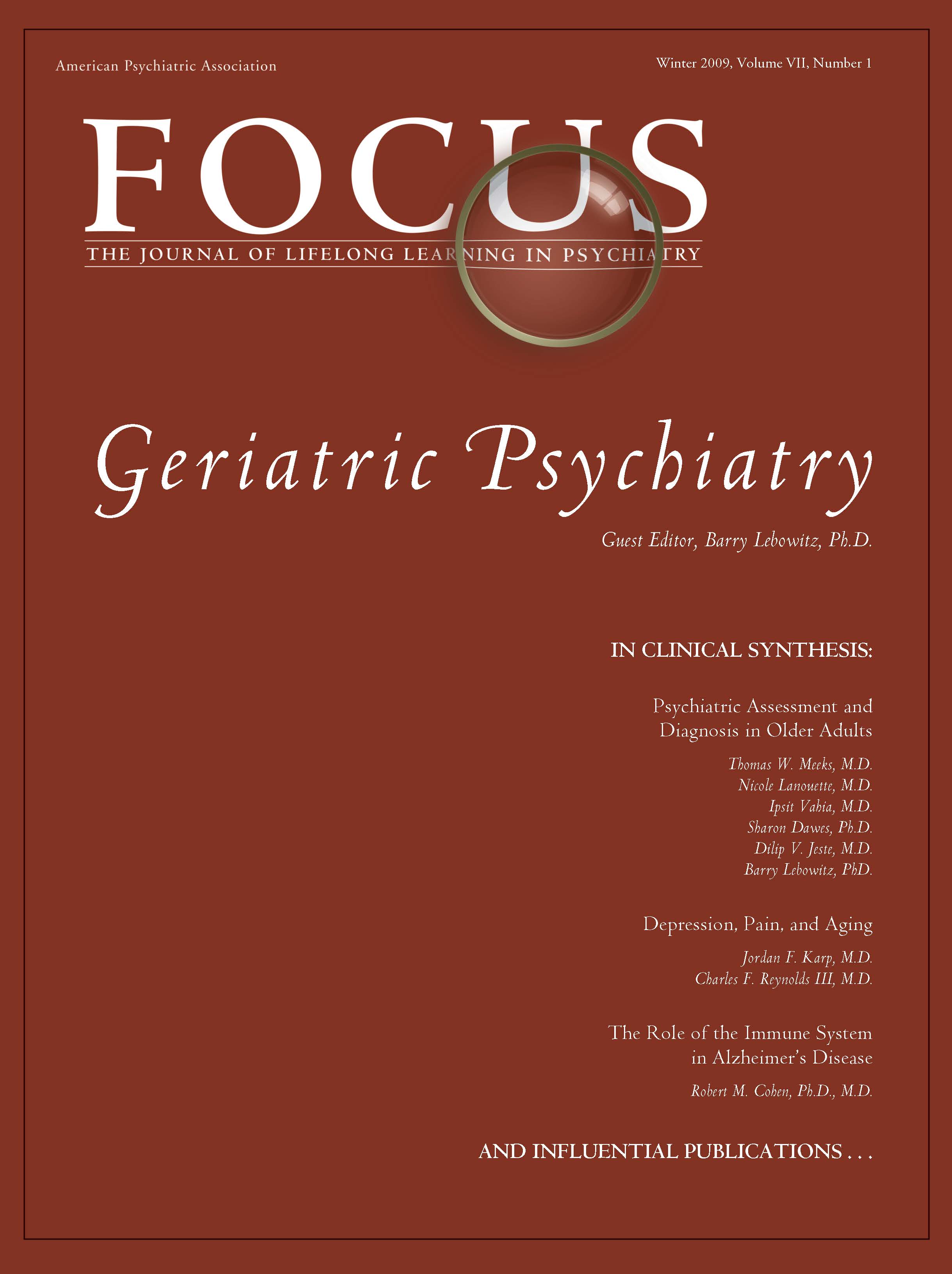Are atypical antipsychotics safe to use in dementia patients—how about all of these conflicting reports regarding the April 2005 FDA black box warning?
One of the most common dilemmas facing psychiatrists currently is the management of agitation and behavioral difficulties in an elderly patient with dementia. Given the wide range of symptoms and signs in a usually physically frail individual with multiple medical comorbidities, a fine balance must be struck between management of symptoms and adverse effects from the intervention. To date, there is no single psychopharmacological agent that has been approved by the U.S. Food and Drug Administration (FDA) for the management of agitation and/or behavioral symptoms associated with dementia. In addition, only a relatively modest body of research exists on the management of agitation in dementia. From a clinical standpoint, virtually every class of psychotropic drug has been reported to be used to address this issue with varying and limited degrees of efficacy.
When the atypical antipsychotics (AAPs) were introduced, their apparent effectiveness and tolerability presented a promising alternative to the typical (conventional) antipsychotics (APs) and their well-documented side effects and poor tolerability in elderly patients. Early in the decade, the FDA conducted an extensive meta-analysis of the 17 placebo-controlled North American and European trials of risperidone, quetiapine, aripiprazole, and olanzapine. The analysis revealed a notable 1.6- to 1.7-fold increase in mortality in patients receiving active treatment compared with subjects receiving placebo. In April 2005, the FDA issued a black box warning for each of the aforementioned AAPs as well as for clozapine and ziprasidone (
1). Specific causes of death were primarily heart-related such as heart failure and sudden death, or infections (mostly pneumonia).
Since the black box warning, several key articles exploring the issue of the safety and efficacy of AAPs in elderly patients with dementia were published. In October 2005, Schneider et al. (
2) conducted a meta-analysis and concluded that AAPs have an associated small increased risk of death compared with placebo and recommended that the risk be considered within the clinical context of the specific patient. Not too much later, Wang et al. (
3) published another meta-analysis of 9,142 patients whose initial treatment was APs and 13,748 whose initial treatment was AAPs. This study revealed that in the first 180 days of use, 17.9% of those using a conventional AP died compared with 14.6% of those who used an AAP. Thus far, the published reports from the Clinical Antipsychotic Trials of Intervention Effectiveness—Alzheimer's Disease (CATIE-AD) suggest that whatever mild to moderate benefit the AAPs provide in elderly patients with Alzheimer's dementia is limited by the relatively poor tolerability of the patients for the many side effects of this class of medications (
4,
5).
Given the above findings on the safety and efficacy of AAPs in elderly patients, what is the best approach to the use of an AAP in an elderly patient with dementia? Should AAPs even be considered as an alternative to the conventional APs in this population? One defining characteristic of the AAPs compared with the APs is the relatively lower incidence of extrapyramidal system side effects (EPSs). The lower incidence of EPSs is a favorable aspect in the elderly patient with dementia as EPSs can certainly aggravate agitation and confusion. Another key issue in selecting an AAP or an AP is consideration of the individual's medical comorbidities, particularly any cerebrovascular and/or cardiovascular conditions.
Multiple guidelines and treatment algorithms are available. The following is a synthesis based on a review of the available guidelines and current literature. Certainly, the approach needs to be modified according to the individual patient and care setting.
1.
Confirm the diagnosis. Confirm the essential diagnosis of dementia: determine the cognitive ability of the patient to accurately assess the possible effectiveness of nonpharmacologic intervention. Be certain that the patient is receiving the appropriate doses of the appropriate cognitive enhancer(s).
2.
Review all medical comorbidities. Assess for any potential exacerbating factors that may be initiating or potentiating the agitation or behavioral difficulties. Along with reviewing medical comorbidities, review all medications (prescription and over-the-counter). On many occasions, some behavioral difficulties may be linked to medications such as anticholinergics, steroids, or cough and cold over-the-counter medications.
3.
Characterize the behavioral difficulty. As much as possible, identify the behavior in terms of when (diurnal variation), duration, intensity, and possible triggers.
4.
Assess for possible affective disorder such as depression or anxiety.
5.
Carefully assess the living situation. Make note of the patient's living environment (home versus assisted care home versus institutional setting) and caregiver (nonprofessional family caregiver versus trained professional).
6.
Initiate nonpharmacological interventions. These include wander guard alarms, safety vests, ID bracelets and other environmental modifications. Review with the caregiver/staff the principles of redirection and review possible environmental modifications to address behavioral issues.
7.
Consider psychopharmacologic intervention. If the behavioral difficulties do not respond to nonpharmacologic intervention and the least restrictive interventions, consider initiating psychopharmacologic intervention. To do so, the following are recommended.
i.
Obtain informed consent and document appropriate disclosure, voluntariness, and capacity. If the patient is unable to participate in the consent process, discuss the treatment plan with the primary caregiver and/or designated decision maker. When initiating therapy with any AP, review the April 2005 FDA black box warning and document the discussion.
ii.
Document the target symptoms.
iii.
Monitor the response of the target symptoms to the medication and also monitor for adverse reactions and side effects.
Above all, maintain open communication with the primary caregiver as he or she is the key ally in the management of the behavioral symptoms in the elderly patient with dementia. Careful monitoring associated with focusing on the primary goals of maintaining safety and comfort for the patient with dementia are the primary principles to guide the treatment. Despite the risk associated with atypical APs, they still represent a useful and effective option in the management of behavioral symptoms and agitation in dementia.

